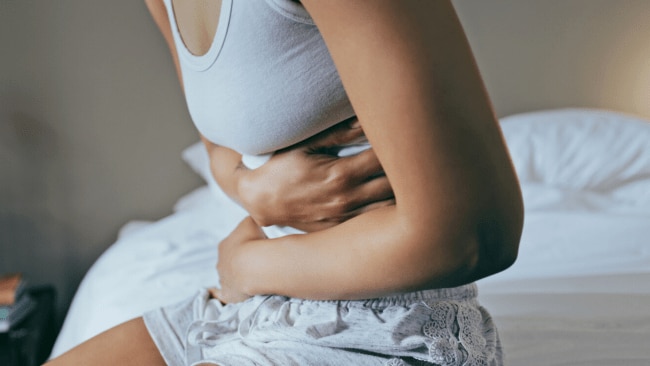You've heard of endometriosis, but what do you know about endometriomas?
AKA 'chocolate cysts'
Endometriosis
Don't miss out on the headlines from Endometriosis. Followed categories will be added to My News.
In this article:
Everything you need to know about endometriomas
Signs, symptoms and treatment options
How chocolate cysts can impact fertility
Think you know everything there is to know about endometriosis? Think again. Associate Professor Gavin Sacks explains a less common – yet severe – symptom of the chronic condition.
With one in nine Aussie females affected by the physical, emotional and financial toll of endo during their lifetime, the time to talk about it is now.
While endometriosis awareness and understanding have never been better in Australia – thanks to countless educational campaigns and the heroic women sharing their stories – many remain in the dark about certain aspects of the chronic condition.
Associate Professor Gavin Sacks, obstetrician and fertility specialist at IVFAustralia, shares with Body+Soul everything you need to know about endometriomas.
What are endometriomas?
As Professor Gavin Sacks explains, endometriomas are not an entirely different condition from endometriosis, but rather a symptom related to acute cases, “Most people who have mild endometriosis, won’t have endometriomas. But when chocolate cysts form on the ovaries, it’s usually associated with severe endometriosis.
In a patient with endometriosis, endometrial-like cells grow outside the womb and cause bleeding and inflammation. While inflammation in the wall of the womb is known as adenomyosis, endometriosis in the ovaries is known as endometriomas.
“Endometriomas are blood-filled cysts, also known as chocolate cysts; they are the result of endometriosis bleeding which gets trapped in the ovaries,” explains Dr Sacks. “The blood in the cyst ages and turns brown. When we open the cysts in surgery, they have a sticky, chocolate-like appearance – this colouring is how the cysts get their name ‘chocolate cysts’.”

What are the signs and symptoms?
As endometriomas only occur in severe cases of endometriosis, the most common signs and symptoms can appear as exacerbated versions of pelvic pain.
“The blood-filled cysts can get quite big, often the size of a tennis ball, filling up space in the pelvis area,” Dr Sacks says. “The position of the cyst usually hangs deep in the pelvis, at the top of the vagina, which can cause pain during sex.”
Additionally, endometriomas inevitably make natural conception challenging for women, “Endometriomas are also associated with poorer quality eggs; during IVF when we extract eggs from women with endometriomas, they tend to have lower quality eggs, and they can affect the number eggs we get from an IVF cycle.”
Though conception can be extremely difficult, Dr Sacks says women who do fall pregnant often experience an alleviation of their symptoms, as pregnancy prevents endo growth. Likewise, women usually find their pain and symptoms disappear after menopause.

How are endometriomas treated?
After diagnosis via a pelvic ultrasound, treatment for endometriomas depends largely on each individual case, taking into account each patient’s age, the severity of their condition, and whether or not they wish to conceive in the future.
“Currently the main treatment options are the contraceptive pill and, for some women, laparoscopic surgery to reduce pain by removing endometriosis lesions,” says Dr Sacks.
Given the risk of impacting a woman’s ovarian reserve, and subsequent fertility, surgery to remove endometriomas will not always be the recommended course of treatment.
“If the cyst is causing pain and you are thinking about having surgery to remove it, it’s critical to check your ovarian reserve is appropriate for your age by having an Anti Mullerian Hormone (AMH) test prior to any surgery decision,” Dr Sacks says. “If your egg count is low, you might want to try an IVF pregnancy first, before embarking on surgery to remove the cyst.”

What happens if endometriomas are left untreated?
Like any severe condition – of which endometriomas certainly are – ignoring symptoms and treatment opportunities will lead to increased pain and deterioration, Dr Sacks explains.
“With endo, the pelvis gets sticky with inflammation, adhesions form between adjacent tissues closing the pelvis area, creating blockages in the fallopian tubes, and often making natural conception difficult, if not impossible,” he says. “Instead of the ovaries being very mobile and separated, they are heavier and fall together; a feature known as ‘kissing ovaries’. The cyst can cause the whole pelvis and anatomy to get distorted.”
This deterioration can have a significant impact on conception and fertility – as can any invasive surgery – which Dr Sacks explains is a careful consideration specialists will make for each individual patient.
“Before embarking on ovary surgery, it’s important to weigh up your fertility,” he says. “An important conversation needs to occur with a fertility specialist to discuss if eggs are collected and frozen first before chocolate cyst removal surgery is considered necessary.”
As a fertility specialist, Dr Sacks has one clear message of advice for women diagnosed with endometriosis who hope to conceive in the future: seek help early if you experience pelvic pain.
“If you have endometriomas, but aren’t in a position to have a baby right now, a good option to consider is freezing your eggs,” Dr Sacks advises. “It’s thought endo and cysts might impact the hormones that stimulate egg growth, so freezing your eggs before the endometriosis deteriorates, can help provide more options to try and conceive later when you are ready.”
More Coverage
Originally published as You've heard of endometriosis, but what do you know about endometriomas?




